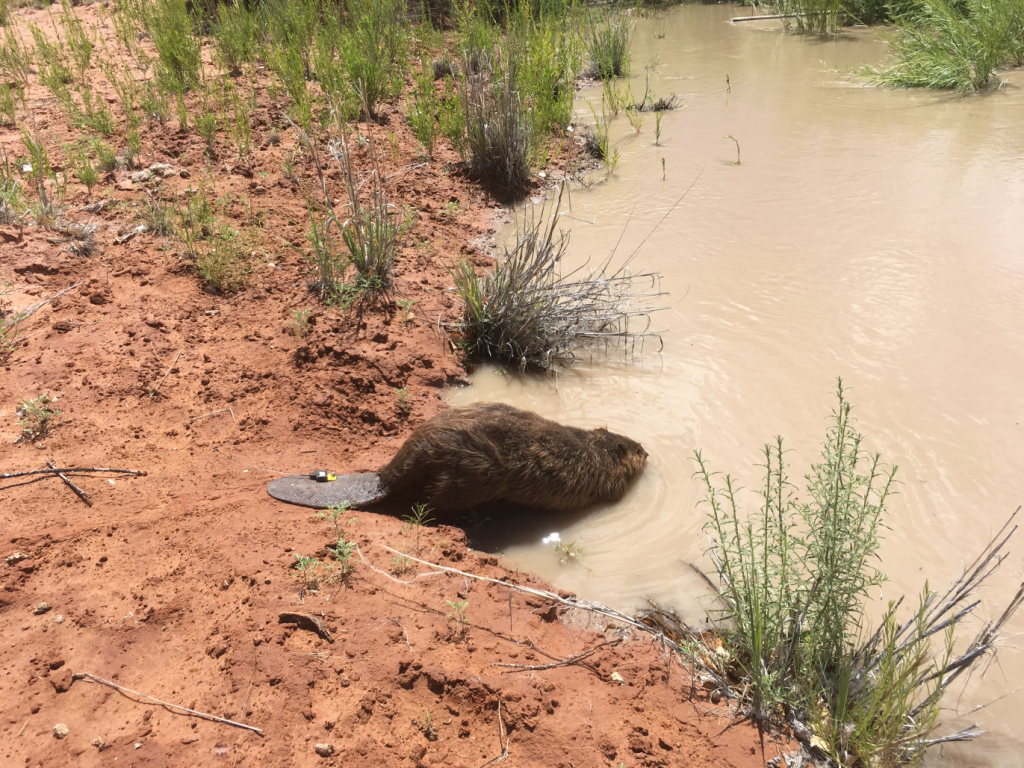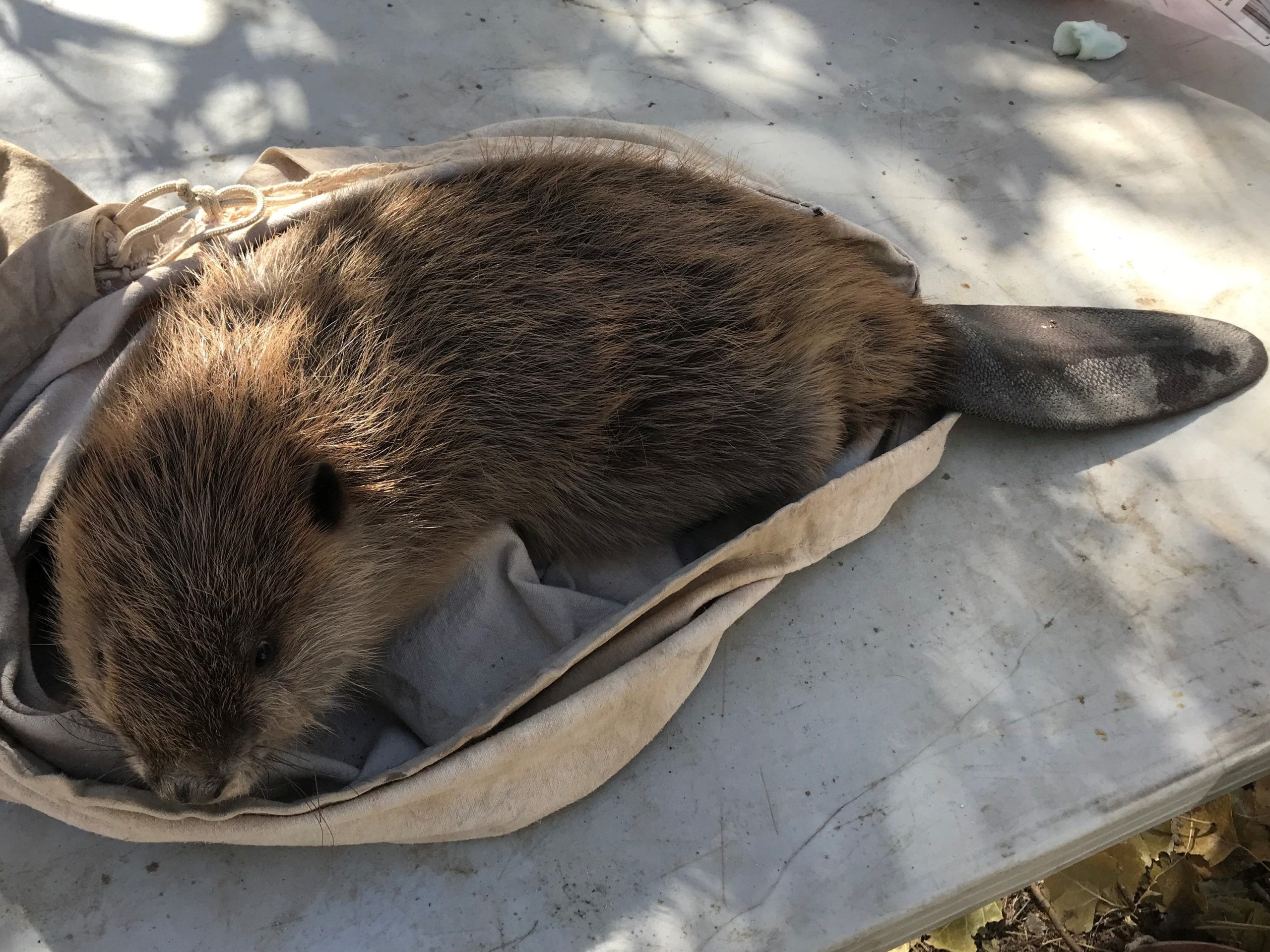In eastern Utah, the sun beats down on red cliffs and dry soil. Water should have disappeared here long ago. But deep in a canyon, the Price River still runs, and green plants line its edges. This stretch of river is changing, and not by accident.
A New Kind of River Rescue
Rivers across the American West are drying up, and the usual fixes aren’t working. Heavy machinery costs millions. Concrete takes decades to build. Climate change keeps making things worse. But a group of researchers has spent years trying something different.
Emma Doden, a graduate student at Utah State University who told reporters about her work, has been part of a project to relocate beavers since 2019 to restore river systems where water is low and the land struggles to retain moisture. She focuses on two Utah rivers: the Price and San Rafael. Both flow through some of the state’s driest areas, where summer temperatures often climb above 100°F for weeks. The drought was so severe that one of their study sites dried up completely.
Doden and her team relocated 47 beavers from across the state. These animals had caused problems for farmers or property owners, and authorities would have euthanized them without this project. Instead, the project gave them a chance to help repair damaged ecosystems.

Before release, each beaver went through a three-day quarantine to prevent disease. They are also tagged with microchips and radio transmitters for tracking.
In these desert systems, beavers hide in their burrows during the day to avoid the intense heat. They emerge at night when temperatures are cooler. The main goal is to encourage the beavers to build dams and do what they do best by restoring fragile waterways.
Read More: Is Africa Splitting in Two? The Deep-Earth Pulse That Has Scientists Intrigued
Beavers at Work
The job is not easy. “We did see some mortality,” Doden recalls. “Some beavers were unable to adapt to the heat, experienced stress related to relocation, and some were killed by natural predators.” Many others wandered far from their release sites. Some beavers settled in their new locations, while others wandered considerable distances downstream. “A few of these beavers stuck where we put them,” Doden notes, explaining that even those that traveled far from their release sites, some moving over 12 miles downstream, are likely still benefiting the broader river system.

Those that stayed began building dams where none had existed before, creating the wetlands that make all the difference. The small dams slow water flow, giving it time to soak into the ground and recharge underground supplies while creating ponds that become safe havens for fish and wildlife when the rest of the river dries up. The ponds also trap sediment and filter pollutants, naturally cleaning the water, and in fire-prone areas. The wet zones act as firebreaks.
Research by Emily Fairfax, a scientist who shared her findings with reporters on beaver dams and wildfire patterns, confirms this protective effect. “In every one of the sites I studied, if there was a dam, the land was protected from fire,” she found.
Signs of Success
Six years later, the Price River shows the healthiest water levels in years. Fish populations are thriving, and the town of Helper has seen its recreation economy grow as tourists come to kayak, tube, and fish in waters that were once too low to support much life.

On the San Rafael River, one area saw a 230% increase in riverside habitat after beavers moved in naturally following a flood. The success has been so clear that researchers are now building artificial dams to attract more beavers to areas that need help.
From Utah to the World
The Utah project reflects a growing global movement to restore wetlands and improve water retention in drought-stricken landscapes using nature’s engineers. In Northern California, tribal biologist Sarah Beesley, who explained her efforts to news outlets, has been working with the Yurok Tribe to revive the Klamath River using beaver restoration. Salmon are central to tribal culture and survival, but decades of drought and pollution have devastated fish populations.
“By enhancing surface flows, we’re able to provide better survival conditions for those juvenile fish,” Beesley explains. The stakes are high, as Barry McCovey, director of the tribe’s fisheries department, who discussed the situation with reporters, puts it: “Our very existence depends on this healthy river.” The economics are clear too. Traditional river restoration would have cost $1 million and taken a decade, but with beavers, the work required only $58,000 and three years.
Across the Atlantic, Richard Brazier from the University of Exeter, who described his research to media outlets, has been leading beaver monitoring efforts since 2013. His research on a five-year trial showed great results, with one stretch of beaver ponds storing over 1,000 tons of water and fish populations 37 percent higher than in nearby unrestored sections. “The real surprise for me was the effect they had on flooding,” Brazier explains. “The dams slowed the flow of water and really reduced the impact of flooding downstream.”
As droughts and fires intensify, these natural solutions become increasingly valuable. The UK government spends over $1 billion annually on flood defenses. Redirecting even a fraction toward beaver restoration could reduce disaster risks while reviving entire ecosystems.
Read More: This Juice Company’s Trash Transformed a Wasteland Into a Lush Forest
Letting Nature Lead
Beaver restoration projects are spreading. From Utah to California, Washington, and Oregon, scientists are bringing beavers back to landscapes that need them. The UK is expanding its programs to Wales, Cornwall, and other regions. The approach symbolizes a shift in how people think about conservation.

Instead of seeing beavers as pests, researchers now view them as partners. The animals that were once hunted to near extinction are now recognized as natural engineers. They can help solve problems that humans have struggled with for decades.
Emma Doden’s work in the Utah desert shows what’s possible. Sometimes the best way to heal damaged land is to step back and let nature do what it does best.
